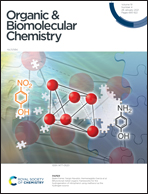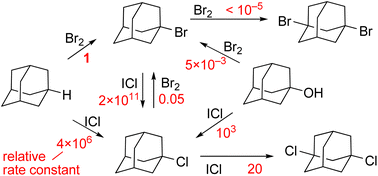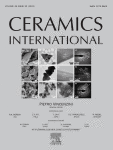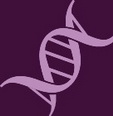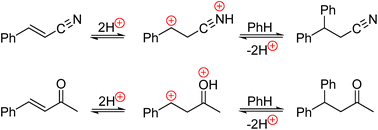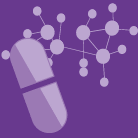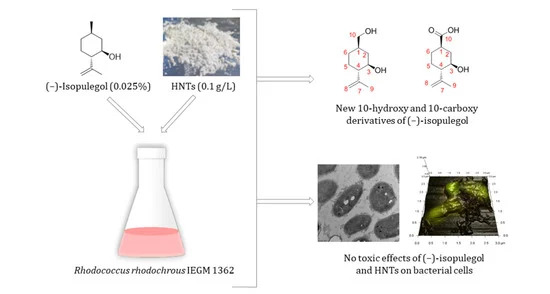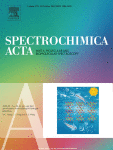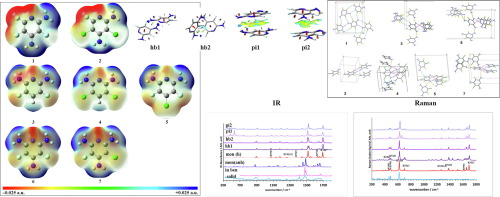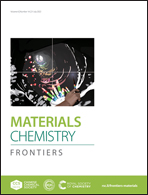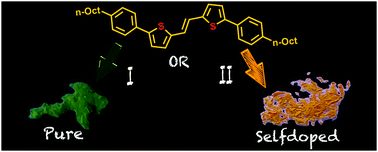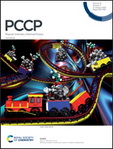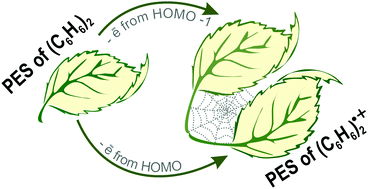Научная деятельность 2023 года
- Монографии, главы в научных книгах
- Обзоры в зарубежных научных журналах
- Обзоры в российских научных журналах
- Публикации (статьи) в зарубежных журналах
- Публикации (статьи) в российских журналах ВАК
- Статьи, опубликованные в журналах, не входящих в список ВАК
- Патенты
- Тезисы докладов на конференциях
Учебные пособия
Монографии, главы в научных книгах
Обзоры в зарубежных научных журналах
Обзоры в российских научных журналах
Публикации (статьи) в зарубежных журналах
2023
- V.A. Trukhanov, A.V. Kuevda, D.I. Dominskiy, A.L. Mannanov, T.V. Rybalova, V.A. Tafeenko, A.Yu. Sosorev, V.G. Konstantinov, M.S. Kazantsev, O.V. Borshchev, S.A. Ponomarenko, M.S. Pshenichnikov, D.Yu. Paraschuk
Strongly polarized surface electroluminescence from an organic light-emitting transistor
Mater. Chem. Front., 2023, Advance Article, The article was first published on 29 Nov 2022 IF 8,683 (2021) doi:10.1039/D2QM01046A
- E.N. Zapolotsky, S.P. Babailov, M.V. Kniazeva, Yu.V. Strelnikova, A.S. Ovsyannikov, A.T. Gubaidullin, S.E. Solovieva, I.S. Antipin, E.S. Fomin, I.P. Chuikov
Synthesis, crystal structure and NMR-study new mononuclear paramagnetic Er (III) complex based on imine derivatives of thiacalix[4]arene
Inorganica Chimica Acta, V.545, 24 January 2023, 121267 IF 3,118 (2021) doi:10.1016/j.ica.2022.121267
- L.N. Shishkina, O.Yu. Mazurkov, N.I. Bormotov, M.O. Skarnovich, O.A. Serova, N.A. Mazurkova, M.A. Skarnovich, A.A. Chernonosov, B.A. Selivanov, A.Ya. Tikhonov, S.G. Gamaley, G.G. Shimina, G.M. Sysoyeva, O.S. Taranov, E.D. Danilenko, A.P. Agafonov, R.A. Maksyutov
Safety and Pharmacokinetics of the Substance of the Anti-Smallpox Drug NIOCH-14 after Oral Administration to Laboratory Animals
Viruses 2023, 15(1), 205; (This article belongs to the Special Issue Diagnostics, Antiviral Therapy and Vaccination against Orthopoxvirus Infections) IF 5,818 (2021) doi:10.3390/v15010205
- K. Sato, E. Bagryanskaya, M. Affronte, S. Hill
A Special Issue of Applied Magnetic Resonance in Honor of Professor Takeji Takui on the Occasion of his 80th Birthday
Applied Magnetic Resonance, (2023), Published 07 January 2023 IF 0,974 (2021) doi:10.1007/s00723-022-01520-9
- V.S. Moskaliuk, R.V. Kozhemyakina, T.M. Khomenko, K.P. Volcho, N.F. Salakhutdinov, A.V. Kulikov, V.S. Naumenko, E.A. Kulikova
On Associations between Fear-Induced Aggression, Bdnf Transcripts, and Serotonin Receptors in the Brains of Norway Rats: An Influence of Antiaggressive Drug TC-2153
Int. J. Mol. Sci. 2023, 24(2), 983 (This article belongs to the Special Issue Molecular Advances in Nervous System Disorders) IF 6,208 (2021) doi:10.3390/ijms24020983
- D. Pon'kina, S. Kuranov, M. Khvostov, N. Zhukova, Yu. Meshkova, M. Marenina, O. Luzina, T. Tolstikova, N. Salakhutdinov
Hepatoprotective Effect of a New FFAR1 Agonist-N-Alkylated Isobornylamine
Molecules 2023, 28(1), 396; (This article belongs to the Special Issue Bioactive Compounds: Design, Synthesis and Biological Evaluation) IF 4,927 (2021) doi:10.3390/molecules28010396
- V. Shelkovnikov, E. Vasiliev, D. Derevyanko, A. Bukhtoyarova, V. Berezhnaya, I. Shundrina
The holographic properties of photopolymers on the base of oxygen- and sulfur-containing spirocyclic monomers
Journal of Materials Science, 2023,, V. 58, N 2, Pp. 983–995 IF 4,682 (2021) doi:10.1007/s10853-022-08105-8
- A. Bryzgalov, T. Tolstikova, B. Koshcheev, A. Maksimov
Synthesis new fluorinated 4-phenyl-1,4-dihydropyridine derivatives, as perspective antiarrhythmic and antihypertensive drugs
Results in Chemistry, 2023, V.5, January 2023, 100705 IF 0 (2021) doi:10.1016/j.rechem.2022.100705
- A.Yu. Sidorenko, Yu.M. Kurban, A.F. Peixoto, N.S. Li-Zhulanov, J.E. Sanchez-Velandia, A. Aho, J. Warna, Y. Gu, K.P. Volcho, N.F. Salakhutdinov, D.Yu. Murzin, V.E. Agabekov
Bronsted acid catalyzed Prins-Ritter reaction for selective synthesis of terpenoid-derived 4-amidotetrahydropyran compounds
Applied Catalysis A: General, 2023, V. 6495, 118967 IF 5,723 (2021) doi:10.1016/j.apcata.2022.118967
- P.A. Nikitina, E.I. Basanova, E.B. Nikolaenkova, I.A. Os'kina, O.A. Serova, N.I. Bormotov, L.N. Shishkina, V.P. Perevalov, A.Ya. Tikhonov
Synthesis of esters and amides of 2-aryl-1-hydroxy-4-methyl-1H-imidazole-5-carboxylic acids and study of their antiviral activity against orthopoxviruses
Bioorganic & Medicinal Chemistry Letters, V. 79, 1 January 2023, 129080 IF 2,94 (2021) doi:10.1016/j.bmcl.2022.129080
- D.S. Baev, M.E. Blokhin, V.Yu. Chirkova, S.V. Belenkaya, O.A. Luzina, O.I. Yarovaya, N.F. Salakhutdinov, D.N. Shcherbakov
Triterpenic Acid Amides as Potential Inhibitors of the SARS-CoV-2 Main Protease
Molecules 2023, 28(1), 303 (This article belongs to the Special Issue Synthesis, Biological Evaluation and Molecular Modeling of Bioactive Compounds) IF 4,927 (2021) doi:10.3390/molecules28010303
- E.A. Chulanova, E.A. Radiush, Ya. Balmohammadi, J. Beckmann, S. Grabowsky, A.V. Zibarev
New charge-transfer complexes of 1,2,5-chalcogenadiazoles with tetrathiafulvalenes† Check for updates
CrystEngComm, 2023, Advance Article IF 3,756 (2021) doi:10.1039/D2CE01385A
- M.E. Mironov, T.V. Rybalova, M.A. Pokrovski, F. Emaminia, E.R. Gandalipov, A.G. Pokrovskii, E.E. Shults
Synthesis of fully functionalized spirostanic 1,2,3-triazoles by the three component reaction of diosgenin azides with acetophenones and aryl aldehydes and their biological evaluation as antiproliferative agents
Steroids, V. 190, February 2023, 109133 IF 2,76 (2021) doi:10.1016/j.steroids.2022.109133
- M.V. Khvostov, E.D. Gladkova, S.A. Borisov, M.S. Fedotova, N.A. Zhukova, M.K. Marenina, Yu.V. Meshkova, N. Valutsa, O.A. Luzina, T.G. Tolstikova, N.F. Salakhutdinov
9-N-n-alkyl Berberine Derivatives: Hypoglycemic Activity Evaluation
Pharmaceutics 2023, 15(1), 44; (This article belongs to the Special Issue Drugs and Drug Delivery for Diabetes Mellitus Treatment) IF 6,525 (2021) doi:10.3390/pharmaceutics15010044
- E.S. Mozhaitsev, E.V. Suslov, D.A. Rastrepaeva, O.I. Yarovaya, S.S. Borisevich, E.M. Khamitov, D.S. Kolybalov, S.G. Arkhipov, N.I. Bormotov, L.N. Shishkina, O.A. Serova, R.V. Brunilin, A.A. Vernigora, M.B. Nawrozkij, A.P. Agafonov, R.A. Maksyutov, K.P. Volcho, N.F. Salakhutdinov
Structure-Based Design, Synthesis, and Biological Evaluation of the Cage-Amide Derived Orthopox Virus Replication Inhibitors
Viruses 2023, 15(1), 29 (This article belongs to the Special Issue Diagnostics, Antiviral Therapy and Vaccination against Orthopoxvirus Infections) IF 5,818 (2021) doi:10.3390/v15010029
- S.G. Il'yasov, V.S. Glukhacheva, D.S. Il'yasov, E.E. Zhukov, I.V. Eltsov, A.A. Nefedov, Yu.V. Gatilov
Adducts of the Zinc Salt of Dinitramic Acid
Materials 2023, 16(1), 70 (This article belongs to the Special Issue Fabrication, Characterization and Application of High-Energy Material (Volume II)) IF 3,748 (2021) doi:10.3390/ma16010070
- T.T. Efremova, S.V. Morozov, E.I. Chernyak, E.V. Chumanova
Combining the genes of blue aleurone and purple pericarp in the genotype of spring bread wheat Saratovskaya 29 to increase anthocyanins in grain
Journal of Cereal Science, V. 109, January 2023, 103616 ( Available online 13 December 2021) IF 4,075 (2022) doi:10.1016/j.jcs.2022.103616
- Ya.V. Burgart, N.A. Elkina, E.V. Shchegolkov, O.P. Krasnykh, G.F. Makhaeva, G.A. Triandafilova, S.Yu. Solodnikov, N.P. Boltneva, E.V. Rudakova, N.V. Kovaleva, O.G. Serebryakova, M.V. Ulitko, S.S. Borisevich, N.A. Gerasimova, N.P. Evstigneeva, S.A. Kozlov, Yu.V. Korolkova, A.S. Minin, A.V. Belousova, E.S. Mozhaitsev, A.M. Klabukov, V.I. Saloutin
Powerful Potential of Polyfluoroalkyl-Containing 4-Arylhydrazinylidenepyrazol-3-Ones for Pharmaceuticals
Molecules 2023, 28(1), 59 (This article belongs to the Special Issue Feature Papers in Organic Chemistry) IF 4,927 (2021) doi:10.3390/molecules28010059
Публикации (статьи) в российских журнала
2023
- Е.С. Щегравина, С.Д. Усова, Д.С. Баев, Е.C. Можайцев, Д.Н. Щербаков, С.В. Беленькая, Е.А. Волосникова, В.Ю. Чиркова, Е.А. Шарлаева, Е.В. Свирщевская, И.П. Фонарева, А.Р. Ситдикова, Н.Ф. Салахутдинов, О.И. Яровая, А.Ю. Федоров
Синтез конъюгатов (aR,7S)-колхицина с монотерпеноидами и изучение их биологиче ской активности
Известия Академии наук. Серия химическая. 2023, № 1, стр. 248 IF 1,704 (2021)
- И.А. Заякин, А.Я. Акыева, М.А. Сыроешкин, И.Ю. Багрянская, Е.В. Третьяков, М.П. Егоров
Синтез, структура и электрохимия нитронилнитроксилзамещенного 1,4-нафтохинона
Известия Академии наук. Серия химическая. 2023, № 1, стр. 213 IF 1,704 (2021)
- А.И. Далингер, Д.С. Баев, О.И. Яровая, В.Ю. Чиркова, Е.А. Шарлаева, С.В. Беленькая, Д.Н. Щербаков, Н.Ф. Салахутдинов, С.З. Вацадзе
Синтез несимметричных амидов N-бензилбиспидинола и изучение их ингибирующей активности по отношению к основной вирусной протеазе SARS-CoV-2
Известия Академии наук. Серия химическая. 2023, № 1, стр. 239 IF 1,704 (2021)
Патенты
- Производные 7-гидроксикумарина, содержащие остатки монотерпеноидов, как ингибиторы репродукции респираторно-синцитиального вируса (РСВ)
Т.М. Хоменко, А.В. Галочкина, Ю.В. Николаева, А.А. Штро, К.П. Волчо, Н.Ф. Салахутдинов
Патент RU 2 787 352, заявка 2022107350 от 21.03.2022, опубликовано: 09.01.2023, бюл. №1
Тезисы докладов




